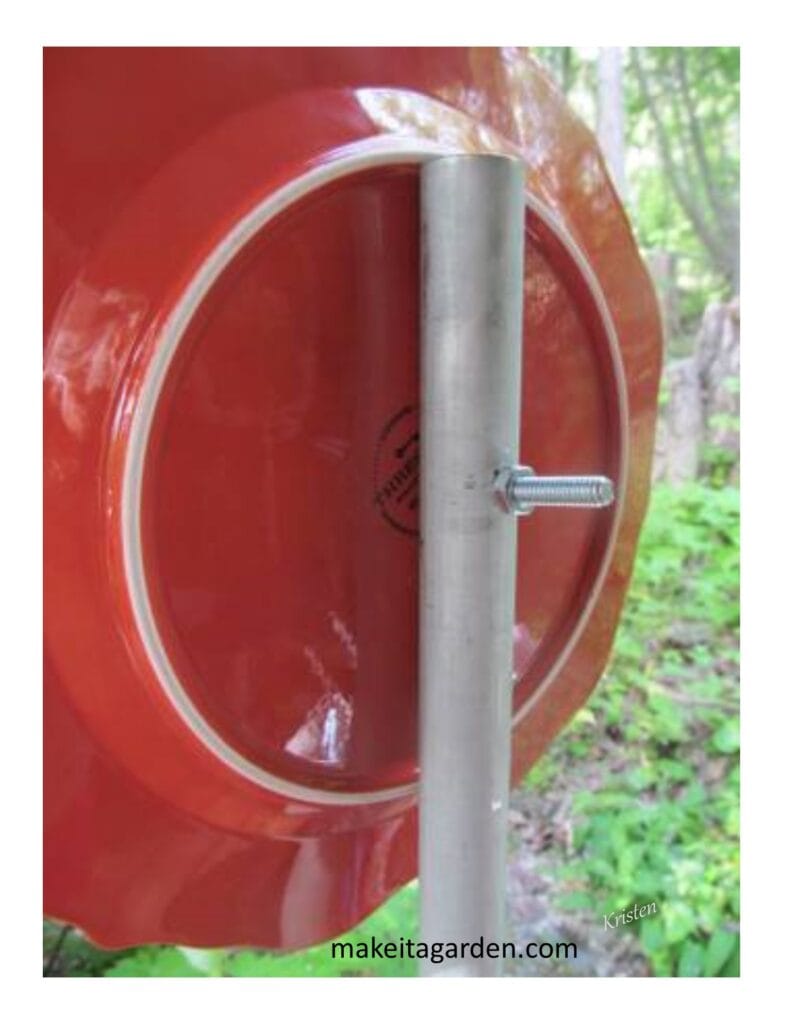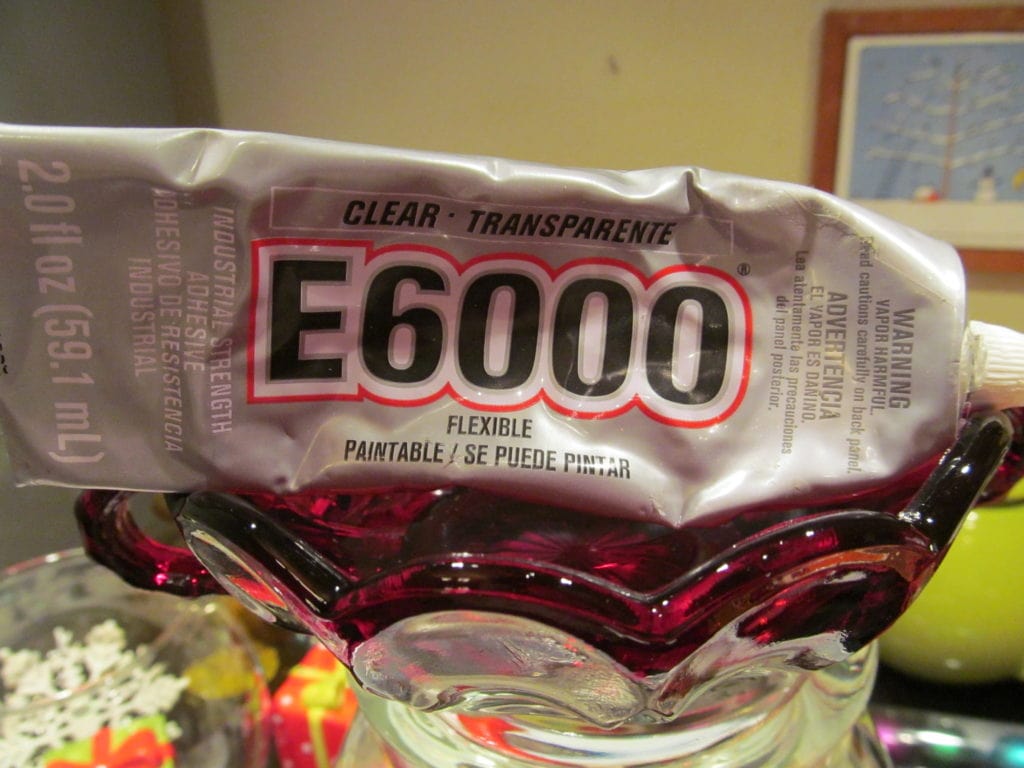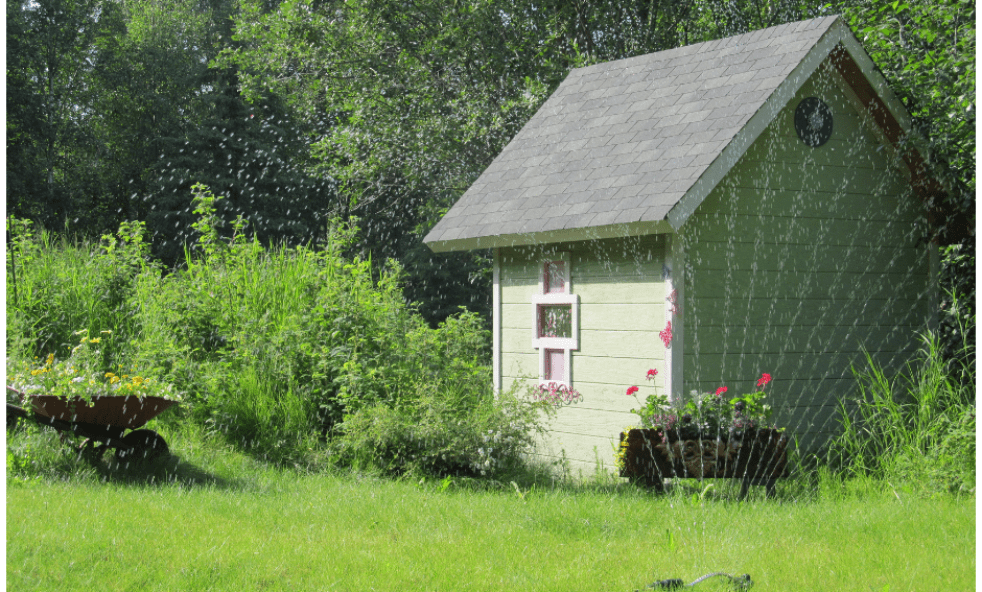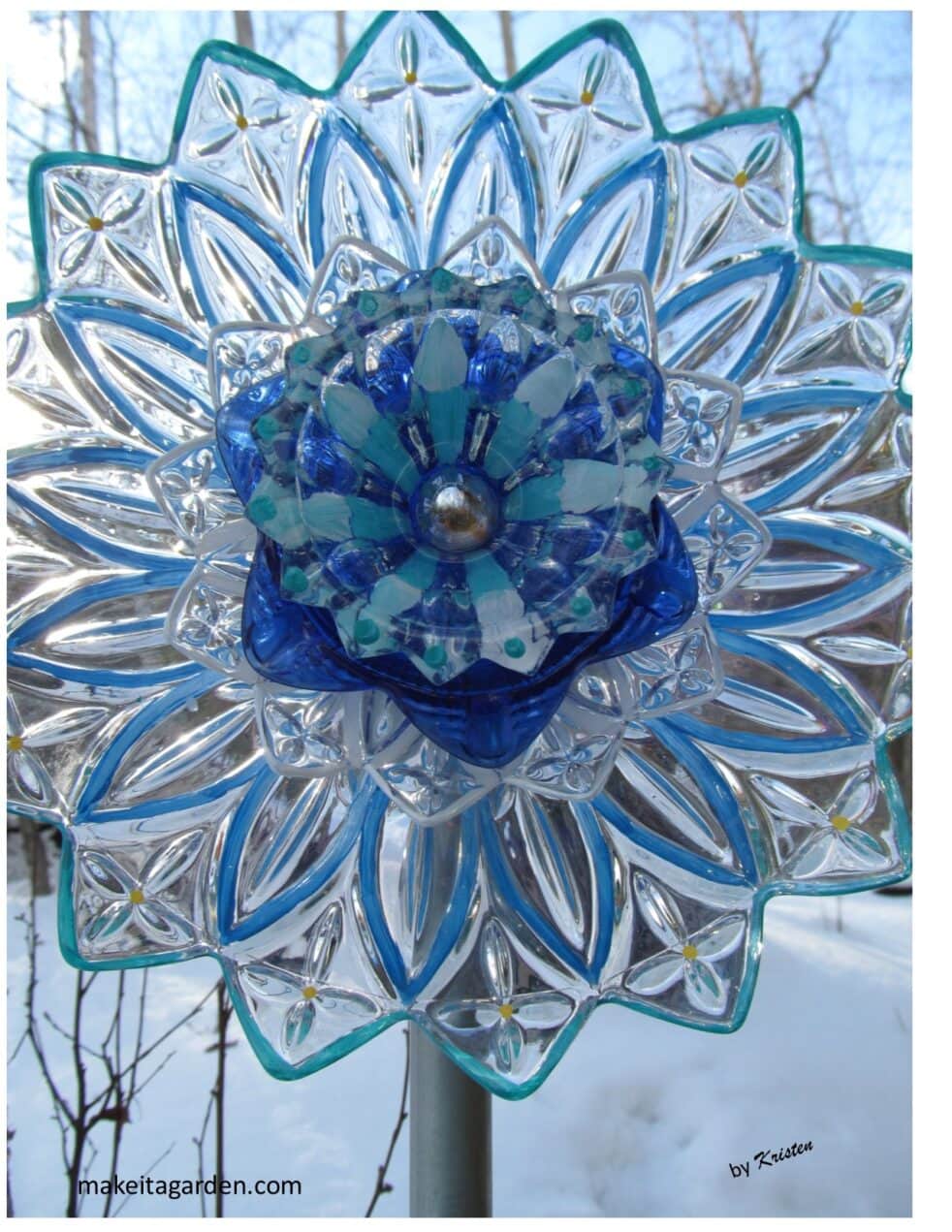
Glue and Garden Art
Did you know that problems with glue are the number one reason dish flowers come apart and sometimes break? Beyond that, people tell me that glue failure is the main reason why they gave up trying to make one for themselves. That always makes me a little sad.
I fell in love with dish flowers when I started seeing them on Pinterest. Although trying to figure out how to make them took quite a bit of time and effort on my part. You see, I planned to sell my works at craft shows, and that meant finding the very best materials and methods for making dish flowers that would hold up for my customers.
Not surprisingly, I get more questions about glue than anything else. That’s why I’ve written this easy-to-understand review of glues. Without getting overly technical and complex,
This Article Covers:
1) Why Glues Fail
2) Proper Application
3) The Best Glues/Adhesives for glass garden art
Why some glues fail
As an artist, I believe it’s important to know not just which glue/adhesive to use or not to use, but why? How come certain ones work, while other ones do not? To understand how glues work is kind of essential to make glass garden art. So you’ll appreciate this.
There are many reasons why glues fail.
Using the wrong glue
While some glues “may” do alright for indoor use, garden art is for outside. Using the wrong glue will have disastrous results. Yes, there are several good, strong-bonding glues on the market that work well with glass. However, they’re not all intended for outside conditions. Why not?
Some glues/adhesives dry out over time when exposed to hot temperatures. They become brittle, crack and come apart. While others will simply turn into butter, beneath a sweltering sun, even when fully cured. But it’s more than just the outside temperature that shows on your thermometer.
Glass and ceramics absorb heat. And that’s not all. As that gorgeous glass dish flower heats up, the weight of those dishes is at stake, too. When glue is compromised, it loses it’s bonding strength. Eventually, Mr. Gravity takes its toll and you end up with broken garden art.


Using less secure mounting methods
The two photos above demonstrate how a plate could easily slip off whatever it’s mounted to. (spoon, bottle, plumbing flange etc.) Additionally, there’ very little surface-to-surface contact for the glue. Again, in the two photos above, there’s just a dab of glue supporting all that weight.
Now, sometimes it would hold up, but with so many variables at stake, the glue method was just unpredictable.
Not allowing glue to fully cure
If you haven’t worked with industrial glues before, it’s certainly understandable how this step could be over-looked. It’s easy to get in a hurry when you want to see how your gorgeous dish flower will look out in the garden.
But another reason why glues fail is because they are put to the task too soon. Adhesives have a certain curing time. Although they may ‘look’ dry or feel dry to the touch, they are still processing and curing beneath the surface to achieve maximum bonding strength. If there’s a lot of stress put on it too soon, the adhesives may fail. For cure times, always read and follow the advice on the back of the package
Problems with glue led me to use the drill method for making my dish flowers. It’s more time consuming and requires some additional tools and extra effort, but I highly recommend it. You can link to my article on drilling plates here: “How to Drill Plates for Garden Art”

The best glues to use for garden art
When dish flowers first started getting popular, way back around 2008 or so, makers experimented with a variety of glues. When it comes to outside garden art, a glue that’s “water-proof” is one of the first qualities you think of. However, as folks discovered, just because a product is water-proof, doesn’t mean it will work when all the other considerations are factored in.
Eventually, through a process of elimination, crafters began to narrow down the glues and adhesives that were continually reliable and star performers for garden art.
The two most common and recognized adhesives for glass garden art are:


Why these products work
Note: this information is provided as a service to my readers. I am not an affiliate nor do I receive product or any monetary compensation or other benefit from acknowledging them here.
As an artist who sells my work, I’m pleased to be able to recommend GE’s 100% Silicone and E-6000 as both have stood the test of time. They are proven reliable for making dish flowers and other glass garden art for the outdoors.
While the two products have their differences chemically, they are similar in many ways. Both dry to a strong, rubber-like consistency that really grips. Both are specifically created with glass in mind.
GE Silicone
GE silicone is not a true “glue”, but rather a sealant. It’s a product for caulking (sealing) around the exterior of a window. If you’ve ever built a house or had a window replaced, this is what the contractor used. Silicone is not only water-proof, but freeze-proof and sun-proof as well, making it ideal for glass garden art.
The other nice qualities I like about silicone is that it does not have a strong odor. The bead is thick and not runny, and that makes application a breeze.
According to the package, it can withstand temperatures from minus 60 to +400 degrees. That’s good news for dish flowers in hot summer climates. Think about this: you may have oven mitts and cupcake pans made from silicone that you can bake at 350 degrees for 20 minutes.
Note: Even though it says “clear” on the package, Silicone is not perfectly clear. It has kind of a cloudy, almost milky tone. Many people have been upset that the product was not as “clear” as they expected it to be. But that’s as “clear” as silicone can get. It’s not all that obvious to the finished product.
E-6000
E-6000 is a “true” glue and a strong-bonding one, too. When squeezed, it goes onto a surface more like a “glue” than a caulk. It has a strong “industrial glue” odor. And it is thin and runny making it a little trickier to apply. It also tends to be “stringy”…but that’s the elasticity of it that makes it so wonderfully grippy.
Unlike silicone, E-600 dries super clear. Sometimes you can’t even see it. So whenever I’m working with clear glass, or even colored glass and I don’t want the glue to show, I use E-6000.
According to the package, E-6000 will withstand temperatures from minus 40 to +180. (SEE advisory below)
NOTE for hot climates: E-6000 may not perform well in hot climates in direct sunlight. Prolonged exposure, and heat absorption (combined with the weight of the plates) may weaken the glue and cause it to fail.
DON’T FORGET YOUR FREEBIE! Scroll down just a bit to sign up. When you join our Art & Garden lover’s community, you’ll receive “10 Artistic Ways to Make Your Yard or Garden Beautiful”.
The correct way to apply glue for garden art
Sometimes, when glue fails, it’s not the fault of the glue, but a poor application of it. When it comes to gluing, we’re like school kids. We tend to put a big dab of it right in the middle of the surface we’re gluing.
But that’s not the best method to achieve a strong bond. When it come to garden art, the best way to apply the glue or adhesive is to place a bead all the way around the bottom rim of the dish.
Where to get these glues?
You’ll find both GE Silicone and E-600 in the paint department aisles of places like Lowes and Home Depot.
Final thoughts
I hope this article on Glue and Garden Art has been helpful. As you can see, there’s quite a few things to take into consideration that affect how glue performs. Especially when used in outdoor garden art. And it’s more than just being “water-proof”.
It’s the heat, and the weight of the plates. It can certainly be the method used to mount the flowerhead. And giving your glue the proper amount of time to fully cure will also help it perform the way it was meant to.
So, if you’ve tried making dish flowers before and something didn’t work out, I hope you’ll try again. If you send me a photo, I’ll put it up on our “braggin’ board” for everyone to admire!
Thanks so much, and happy gardening.
More Garden Art related topics
How to paint on glass for making dish flowers
How to Make Glass and Ceramic Dish Flower garden art
Inspiring Gallery of dish flowers
How to make a pretty bird bath from dishes
The form you have selected does not exist.


Thank you, this is very helpful. I have to repair a glass garden art piece where the adhesive failed on a painted dish. Some of the paint came away when I separated the loose pieces and I think that will actually make the seal stronger on the clear glass.
I agree! I’m glad your lovely garden art piece is fixable! I appreciate your comment, thank you!
I have been using Marine Glue from Goop. It dries clear like the e6000 glue. we’ve had a heck of a time with 1 of our bird baths.
we’ve had a heck of a time with 1 of our bird baths.
It’s for water and heat, comes from Menards. I would really like to try the drilling but haven’t gotten the chance yet.
Yes you really have to be careful for any glass that has paint on it because the glue does not stick to it
Thank you for the information
Thanks for sharing your experience with Marine Glue. What I pay the most attention to is the heat resistant rating. Depending on where you live, it may or may not be a factor. It’s certainly NOT a factor where I live and glues like E-6000 work just fine w/o fail and while I do not have personal experience with marine glue, I’m sure it would perform just as well. However, according to the manufacturer, the marine glue made by Goop has a heat tolerance of 180 degrees. Similar to E-6000. Silicone (as mentioned in the article) is rated to 400. It’s not just the outside air temperature. Glass absorbs and retains heat and that contributes to glue fails. As for your bird bath, have you tried sanding the surface? Is it possible remove the paint at the part you want to bond together? If it’s ceramic, you may be able to add a thin layer of clay or concrete to the bottom and then try again. As much as ‘problems’ exasperate me, I learn so much about how things work when looking for solutions. I hope things go well with your projects and thanks for visiting my site. ~ Kristen
Thank you much, I did 4 but only have one left standing, because I use the wrong glue, I learn so much from reading article did know all that about blue, I thought just because of the name gorilla glue that would work so that’s what I tried along with the 6000 but I didn’t fall out for too long but I will not give up I’m gonna make sure that I try another method because I’m not the one to give up and I love beautiful things and when I saw the flowers it was awesome and I had to do it myself so I just wanna say thank you,
You’re very welcome. Helping others make pretty garden art is what “Make it a Garden” is all about. I’m so happy you didn’t give up! Good for you! I’ve learned myself that if something doesn’t go right, to find out ‘why’ and make adjustments. That’s where knowledge kicks in! Just FYI “Gorilla” is a brand name. They make many different products under that name, including a silicone. But it’s 90% silicone (If I remember right), which will work. But I like the brand GE silicone which is 100% silicone. I’m always available if you have further questions.